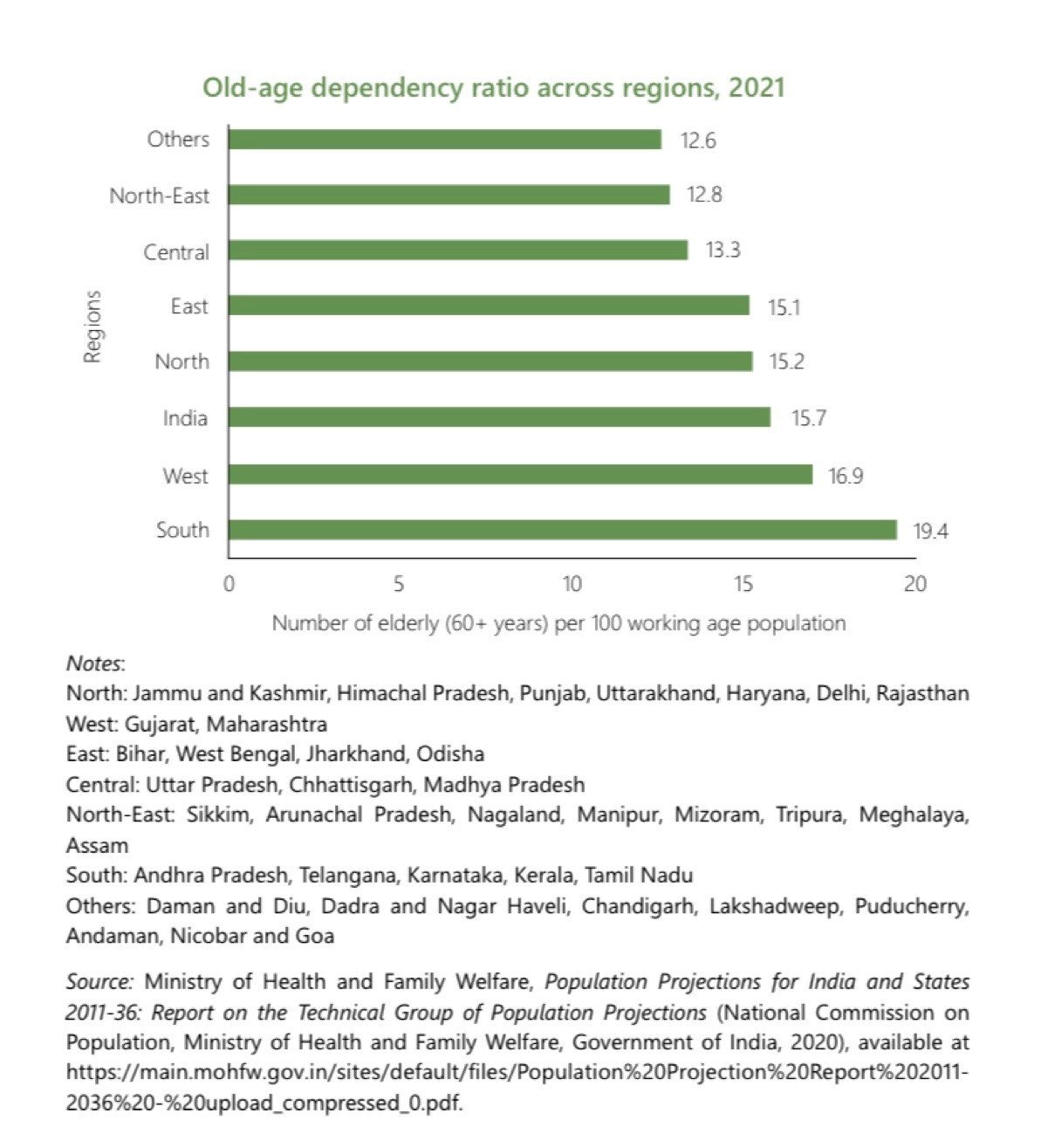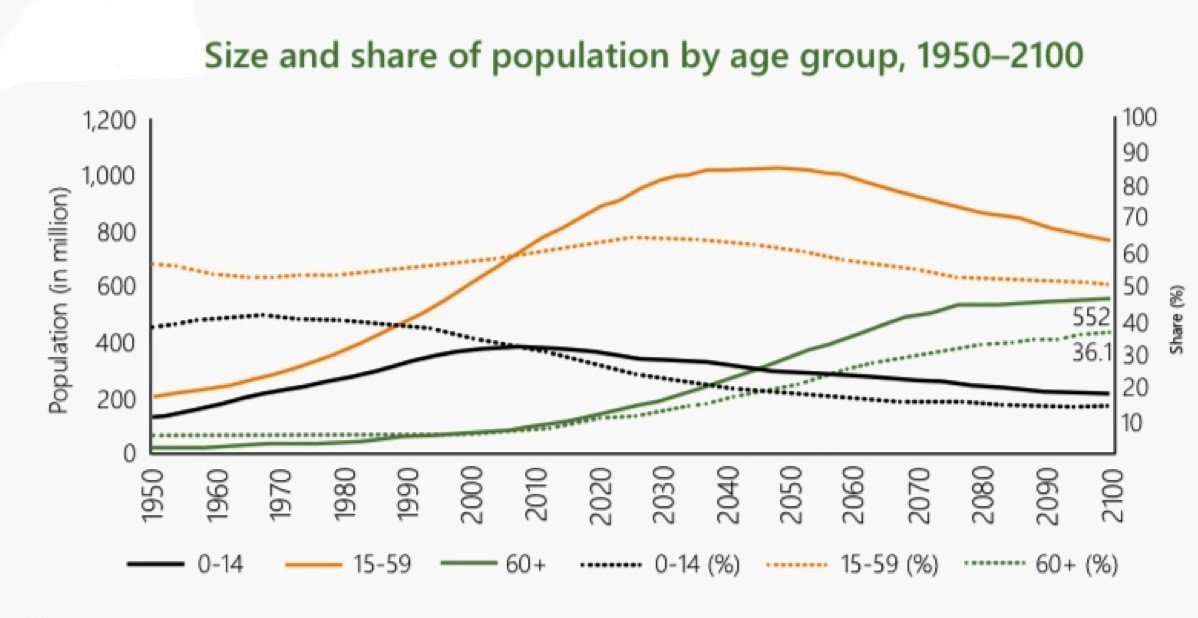In 2046, the population size of the elderly in India will be higher than the population size of children aged 0–14 years, India Ageing Report 2023 reveals. The report was released on 26th September 2023 by UNFPA (United Nations Population Fund) India in collaboration with the International Institute for Population Sciences (IIPS). It also says that by 2046, the population share of 15–59 years will also see a dip.
The report states that the share of the 60+ population increase from 10.5 percent in 2022 to 20.8 percent in 2050. By the end of the century, the elderly will constitute over 36 percent of the total population of the country.

Elderly population projected to be at 15 percent in 2036
India Ageing Report 2023 points out the significant interstate variation in absolute levels and growth of the elderly population, given the varying stages and pace of demographic transition across states. While at the national level, the share of the elderly population is projected to increase from 10.1 percent in 2021 to 15 percent in 2036, most of the states in the southern region and select northern states such as Himachal Pradesh and Punjab reported a higher share of the elderly population than the national average in 2021, a gap that is expected to widen by 2036.
Download Nagaland Tribune app on Google Play

States such as Bihar and Uttar Pradesh that are reporting higher fertility rates and lagging in demographic transition expect to see an increase in the share of the elderly population between 2021 and 2036 however it will remain lower than the Indian average.
It also says that according to 2021 population estimates, there are 39 older persons per 100 children in India and that the index indicates decline in fertility in states with a higher share of the elderly population. Compared to southern and western India, central and north-eastern regions have the younger group of states as indicated by the ageing index, the report reveals.

Lower old-age dependency ratio in NER
The old-age dependency ratio of a population represents the number of persons aged 60+ years per 100 persons in the 15–59 years (or working-age) group. Population projections indicate that in 2021, there were 16 older persons per 100 working-age persons in India, with significant variations across regions. In line with the findings regarding the ageing index, in the southern region, the old-age dependency ratio was higher than the national average at around 20 as is true of western India at 17. Overall, Union Territories and the north-eastern region reflected lower old-age dependency ratios, India Ageing Report 2023 states.

Elderly females have higher life expectancy
At 60 years, a person in India may expect to live another 18.3 years, which is higher in case of females at 19 years as compared to males at 17.5 years. Feminization of ageing reflects the extra life years survived by elderly females (as compared to males) at the age of 60 years, raising concerns about their social and economic well-being, the report says.
In states where life expectancy at 75 years exceeds 10 years, programmes and policies to support a healthier life for the oldest of the old persons are clearly called for.

